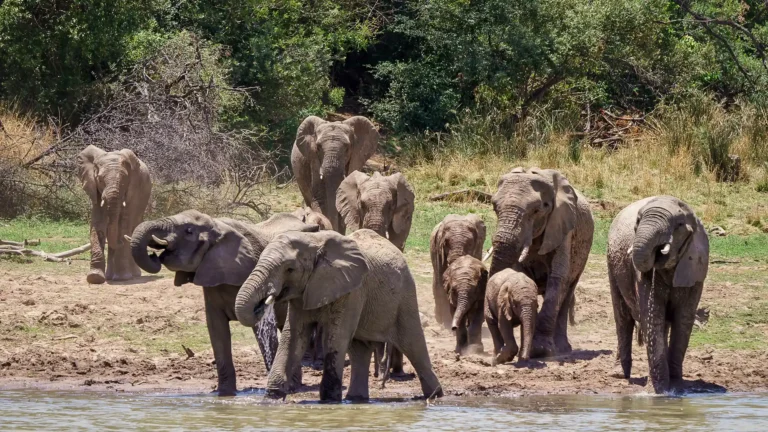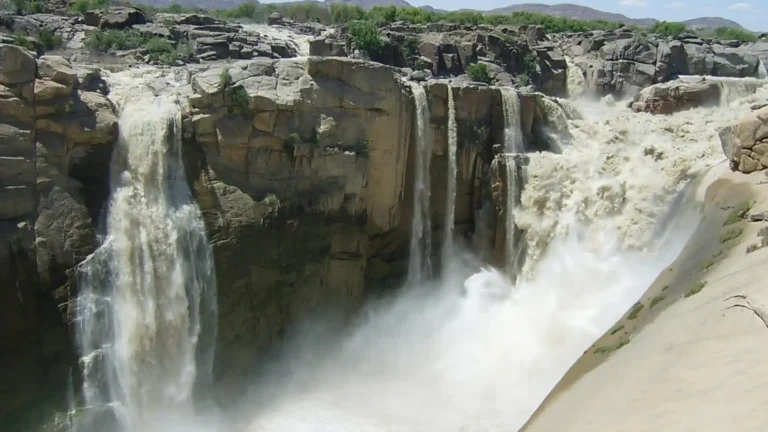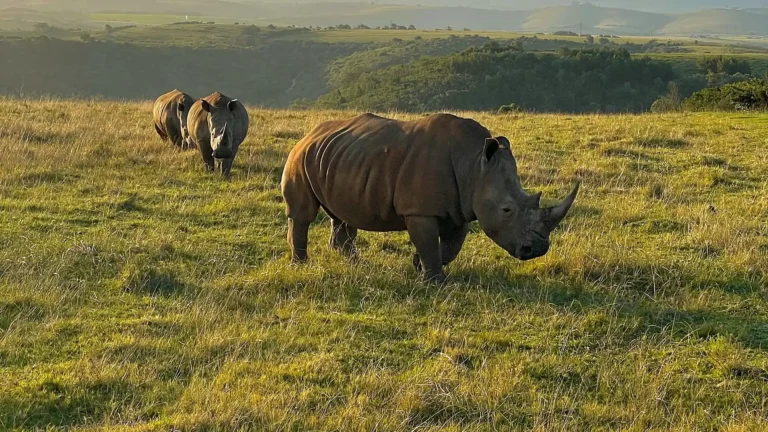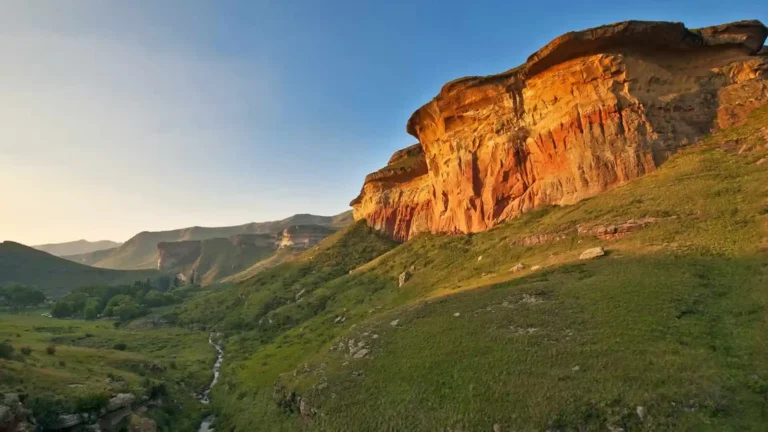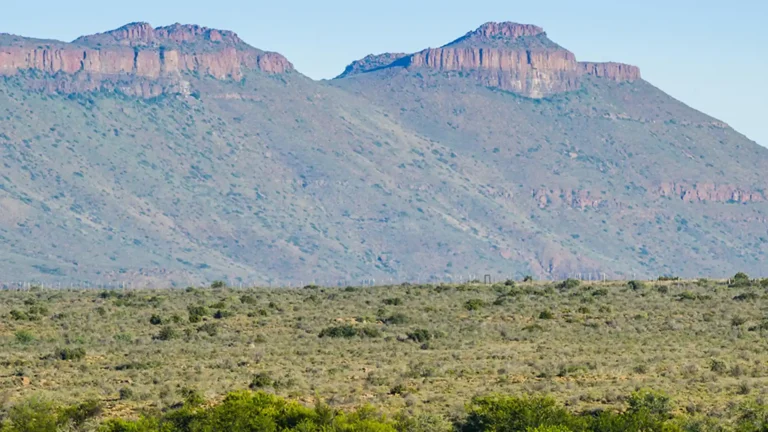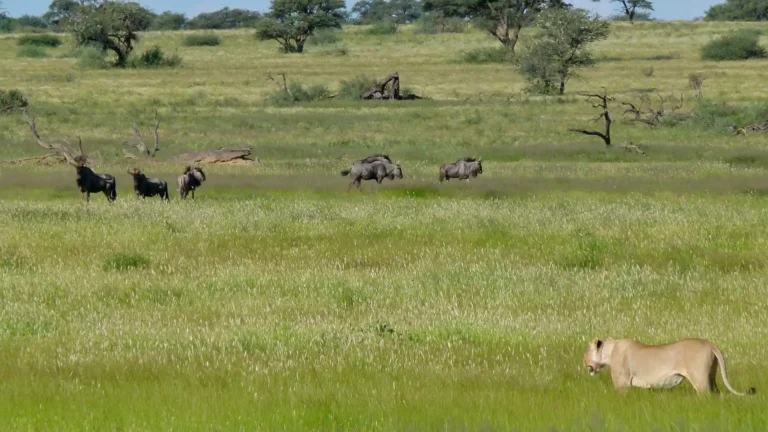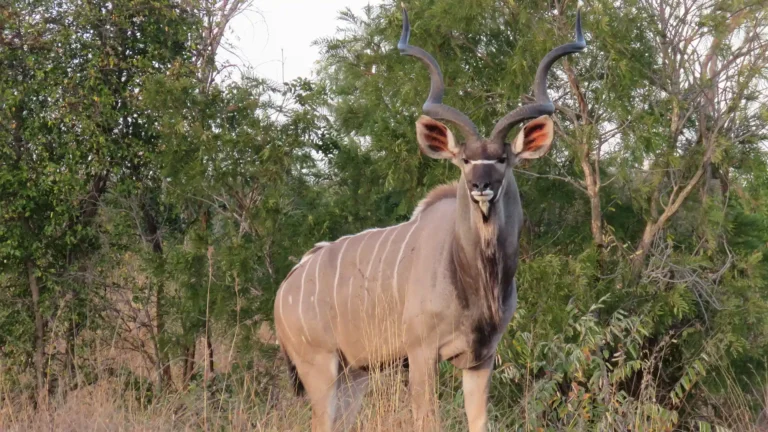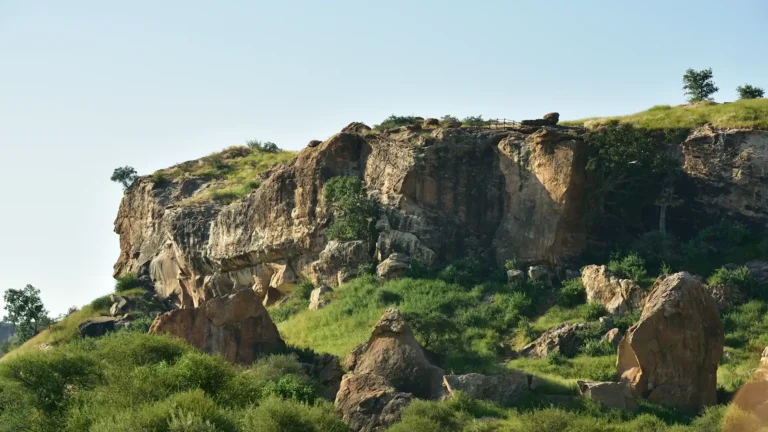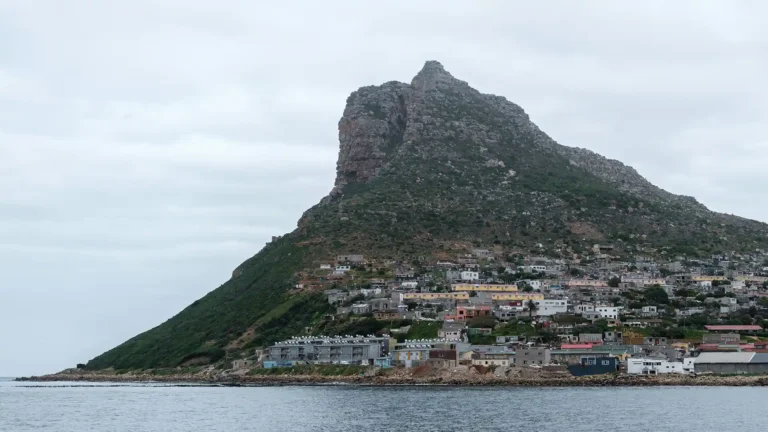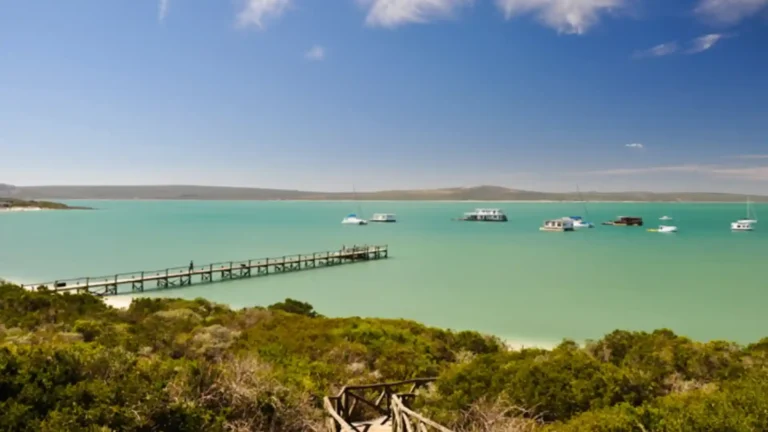Drakensberg Mountains
Drakensberg Mountains: A UNESCO World Heritage site with soaring basalt peaks, dramatic cliffs, and ancient San rock art, known as the “Barrier of Spears”.
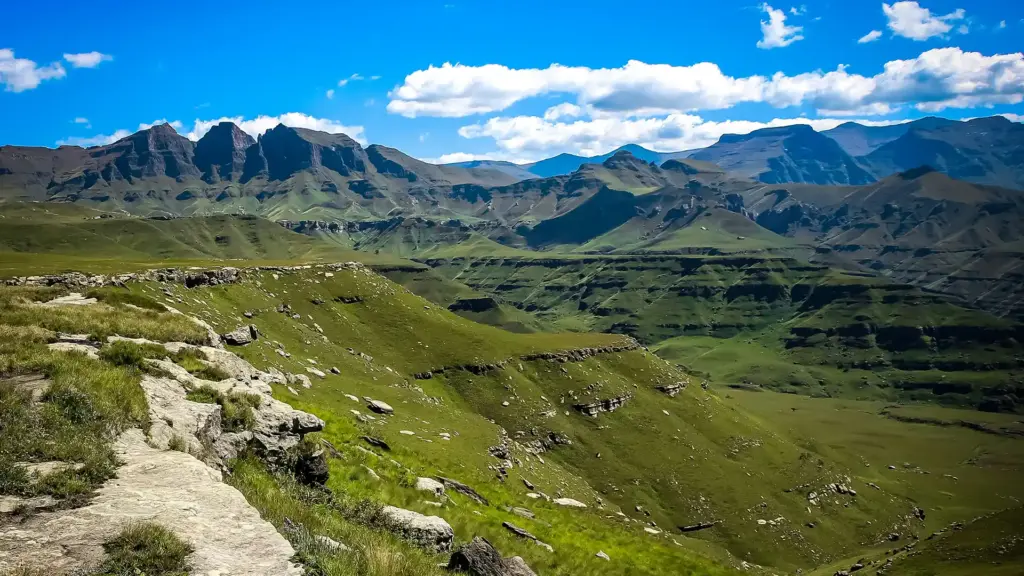
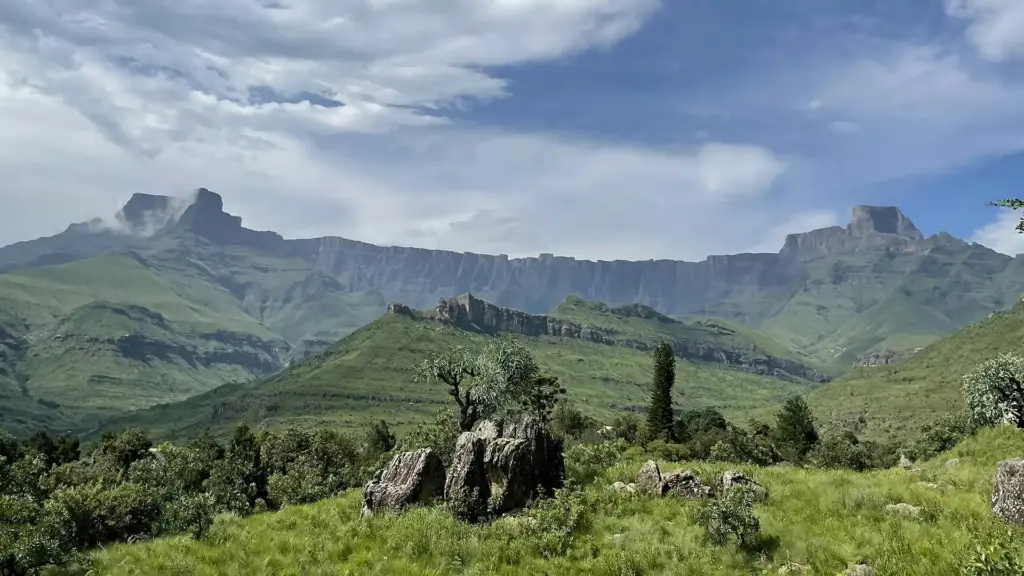
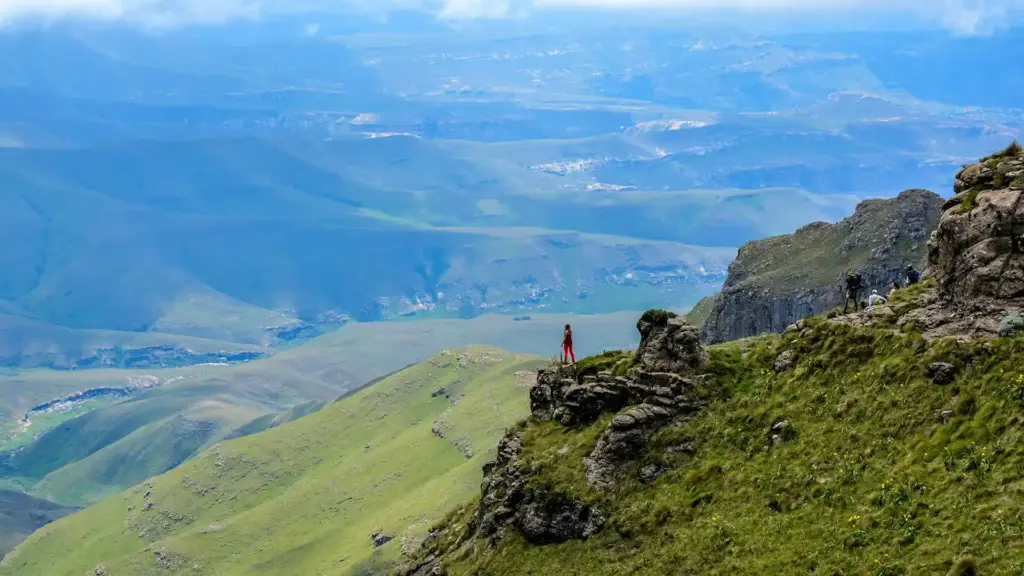
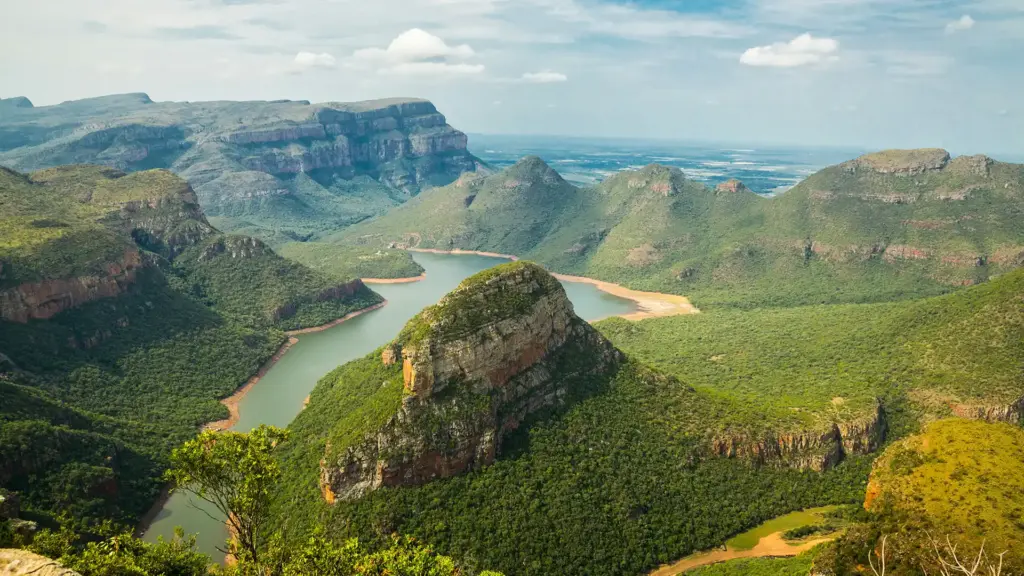
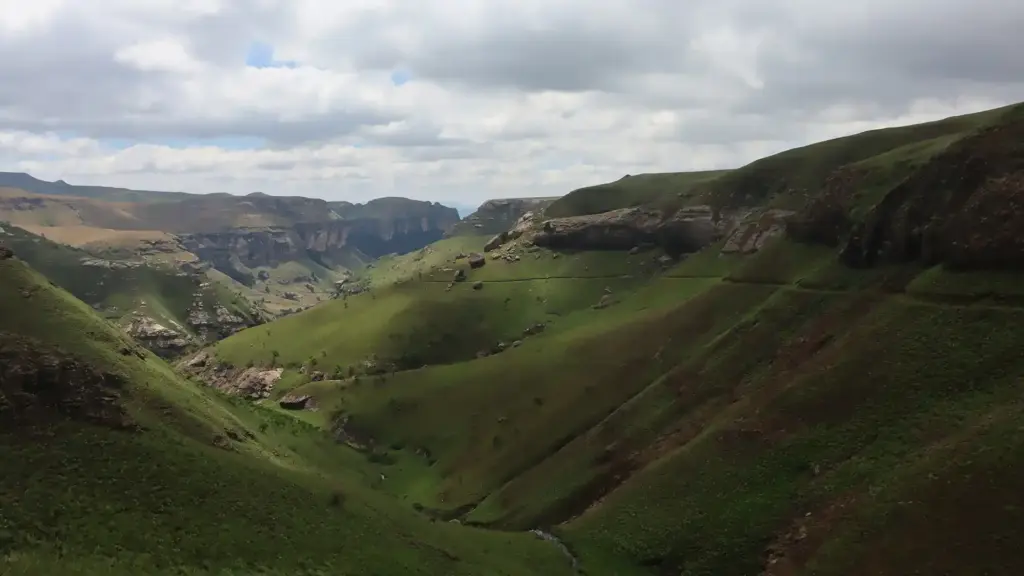
Overview
The Drakensberg Mountains, also known as uKhahlamba or the “Barrier of Spears” in Zulu, form the eastern portion of South Africa’s Great Escarpment, stretching over 1,000 kilometers from the Eastern Cape to Mpumalanga. This breathtaking mountain range, with its highest peaks reaching over 3,000 meters, is a geological marvel shaped by ancient volcanic activity and erosion over millions of years. The Drakensberg is not only a natural border between South Africa and Lesotho but also a UNESCO World Heritage site, celebrated for its stunning landscapes of soaring basalt cliffs, dramatic cutbacks, and golden sandstone ramparts.
The climate in the Drakensberg varies with altitude, with lower regions experiencing a temperate climate while higher altitudes, particularly in winter, can see snowfall and freezing temperatures. This diverse climate supports a wide range of flora and fauna, including endemic plant species like the Drakensberg cycad and over 300 bird species such as the bearded vulture. The area is also rich in cultural history, home to numerous San rock art sites, some dating back thousands of years, offering a glimpse into the lives of the region’s earliest inhabitants.
Things to Do
Hiking and Trekking: The Drakensberg is a hiker’s paradise, with trails that range from easy walks to strenuous multi-day treks. The most famous hike is to the Amphitheatre in the Royal Natal National Park, where you can witness the breathtaking Tugela Falls, the second-highest waterfall in the world. Other popular routes include the Cathedral Peak trail and the Giant’s Castle Reserve, offering panoramic views and encounters with the region’s rich biodiversity.
Horseback Riding: Experience the Drakensberg’s landscapes in a unique way by horseback riding through its valleys and along mountain trails. This activity is particularly popular in the Central Drakensberg area, where guided rides are available for all skill levels, allowing you to connect with nature at a gentle pace while covering more ground.
San Rock Art Tours: The Drakensberg is home to the largest concentration of San rock art in Africa, with some sites dating back over 3,000 years. Guided tours take you to these ancient sites, where you can view intricate paintings that depict the spiritual and daily life of the San people, offering a deep dive into the region’s cultural heritage.
Wildlife Viewing: The diverse ecosystems of the Drakensberg support a wide range of wildlife. On guided nature walks or drives, you might spot species such as eland, the largest antelope in the region, as well as mountain reedbuck, baboons, and a variety of birds, including the endangered bearded vulture. The best areas for wildlife viewing are the Giant’s Castle and Royal Natal National Parks.
Canopy Tours and Zip-lining: Experience the Drakensberg from a different perspective by zipping through its treetops on a canopy tour. These tours offer an adrenaline rush as you glide between platforms high above the forest floor, with stunning views of the mountains and valleys below. It’s a fun and exhilarating way to explore the region’s natural beauty.
Mountain Biking: The Drakensberg’s varied terrain makes it a fantastic destination for mountain biking. Trails range from gentle rides through rolling hills to challenging routes that take you deep into the wilderness. Biking offers a great way to explore the landscape at your own pace while enjoying the fresh mountain air.
Cultural Experiences: Engage with local Zulu culture by visiting traditional villages in the Drakensberg. Here, you can learn about the customs, crafts, and daily life of the Zulu people, with opportunities to participate in traditional dancing and taste local cuisine. These cultural tours provide insight into the rich heritage of the region.
Hot Air Ballooning: For a truly unforgettable experience, take a hot air balloon ride over the Drakensberg at sunrise. As you float silently above the landscape, you’ll be treated to panoramic views of the mountains, valleys, and rivers, bathed in the golden light of dawn. It’s a serene and breathtaking way to see the Drakensberg from a bird’s-eye view.
What to See
The Amphitheatre: One of the most famous landmarks in the Drakensberg, the Amphitheatre is a dramatic rock wall that stretches over 5 kilometers and rises up to 1,200 meters. This awe-inspiring feature, located in the Royal Natal National Park, offers some of the most stunning views in the region, especially at sunrise and sunset.
Tugela Falls: Plunging nearly 950 meters, Tugela Falls is the second-highest waterfall in the world. The falls cascade down the Amphitheatre’s cliffs in five distinct drops, creating a mesmerizing spectacle. Visiting Tugela Falls, especially after the summer rains, is a must for any nature enthusiast.
Cathedral Peak: Known for its distinctive spire, Cathedral Peak offers some of the most rewarding views in the Drakensberg. The hike to the summit is challenging but immensely rewarding, with panoramic vistas that stretch across the mountain range and into the valleys below.
San Rock Art: The Drakensberg is home to one of the largest collections of San rock art in the world. These ancient paintings, found in caves and rock shelters throughout the region, depict the spiritual and daily lives of the San people. Sites like the Kamberg Nature Reserve and Giant’s Castle are particularly rich in these historic artworks.
The Sani Pass: Known as one of the most scenic and treacherous mountain passes in Africa, the Sani Pass connects South Africa to the Kingdom of Lesotho. The drive up the pass is an adventure in itself, offering breathtaking views of the Drakensberg’s rugged terrain. At the top, you can visit the highest pub in Africa and enjoy a panoramic view of the surrounding landscape.
Monks Cowl: This area, named after the distinctive peak resembling a monk’s hood, is a gateway to some of the most beautiful hikes in the Central Drakensberg. Trails here lead through lush valleys, past waterfalls, and up to mountain ridges that offer expansive views of the entire range.
Royal Natal National Park: This park is a gem within the Drakensberg, offering a mix of easy walks and challenging hikes. Beyond the Amphitheatre and Tugela Falls, the park is known for its lush forests, clear streams, and the serene Mahai River. It’s a perfect spot for picnicking and relaxing amidst nature.
Giants Castle: This area is not only a haven for hikers but also a prime spot for wildlife viewing. The reserve is famous for its population of eland and other antelope species, as well as its well-preserved rock art sites. The Giants Castle Main Caves Museum provides insight into the lives of the San people who once inhabited the area.
Didima Valley: Located near Cathedral Peak, Didima Valley is known for its dramatic scenery and the Didima Rock Art Centre, which offers fascinating exhibits on the San people and their art. The valley itself is dotted with wildflowers and offers stunning views of the surrounding peaks.
The Drakensberg Gardens: This scenic area is perfect for those looking to enjoy the natural beauty of the Drakensberg in a more relaxed setting. With its well-manicured gardens, flowing rivers, and mountain backdrops, it’s an ideal spot for a leisurely stroll, a family picnic, or simply soaking in the tranquil atmosphere.
Best Time to Visit
the best time to visit the Drakensberg Mountains is during the dry winter months from May to September. During this period, the weather is crisp and clear, providing breathtaking views of the rugged peaks against a deep blue sky. Wildlife sightings are more frequent, as animals gather near water sources, and the reduced vegetation makes hiking trails easier to navigate. This is also the ideal time to explore the area’s iconic trails, such as the Amphitheatre and Cathedral Peak, or to simply bask in the serenity of the mountain air.
Getting there
By Road: The Drakensberg is accessible via well-maintained roads. From Johannesburg, it’s a 4-5 hour drive via the N3 highway. From Durban, it’s about a 2-3 hour drive. The roads leading into the mountains are scenic, but be prepared for some winding routes as you get closer.
By Air: The nearest major airports are in Durban and Johannesburg. From there, you can either hire a car or take a shuttle service to the Drakensberg. Local flights are available to Pietermaritzburg or Ladysmith, both of which are closer to the mountains, followed by a road transfer.
Where to Stay
Mid-Range Accommodation
The Cavern Drakensberg Resort & Spa
A welcoming, family-friendly resort situated in a stunning valley in the Northern Drakensberg. It offers a range of accommodation options from standard rooms to suites, all designed to provide comfort and convenience. The resort is known for its excellent dining options, including a hearty breakfast and gourmet dinners. Guests can enjoy a variety of activities such as guided hikes, horse riding, and spa treatments. The resort also has a children’s program, making it an ideal choice for families looking to explore the Drakensberg.
Cathedral Peak Hotel
Nestled within a secluded valley, surrounded by towering peaks. This historic hotel has been a favorite for decades, offering guests an authentic Drakensberg experience. The rooms are elegantly furnished, many with private balconies that provide breathtaking views of the surrounding mountains. The hotel offers a wide range of facilities, including a golf course, a swimming pool, and a variety of guided walks. It’s an excellent choice for travelers seeking both adventure and relaxation.
Monks Cowl Golf Resort
Combines the best of leisure and nature. Located near the famous Monks Cowl peak, this resort is perfect for those looking to enjoy a round of golf while surrounded by the beauty of the Drakensberg. The accommodation includes spacious rooms and self-catering units, all designed with comfort in mind. The resort’s tranquil setting and close proximity to hiking trails make it an excellent base for exploring the region.
Luxury Accommodation
Cleopatra Mountain Farmhouse
A luxurious boutique hotel renowned for its gourmet cuisine and intimate atmosphere. Nestled in the Kamberg Valley, this farmhouse offers individually decorated rooms, each with a unique theme and antique furnishings. The farmhouse’s chef prepares exquisite meals using locally sourced ingredients, providing a true culinary experience. Cleopatra Mountain Farmhouse is ideal for couples seeking a romantic getaway amidst the Drakensberg’s stunning landscapes.
Champagne Castle Hotel
Offers elegance and serenity in the heart of the Drakensberg. Located at the base of Champagne Castle, one of the highest peaks in the range, this hotel provides guests with stunning views and top-notch amenities. The rooms are tastefully decorated, with modern comforts and large windows that frame the mountain scenery. The hotel also features a wellness center, a swimming pool, and guided hiking tours, making it perfect for those looking to indulge in both
Other Attractions in South Africa
General Knowledge Base
General information about Drakensberg Mountains, South Africa.
The Drakensberg Mountains were designated a UNESCO World Heritage Site in 2000 for both their natural and cultural significance. The region is recognized for its stunning landscapes, which include the towering basalt peaks and deep valleys. Additionally, the area is home to one of the largest and most concentrated collections of San rock art in Africa, with some paintings dating back over 2,000 years. This combination of natural beauty and cultural heritage is what earned the Drakensberg its World Heritage status.
The highest peak in the Drakensberg range is Thabana Ntlenyana, which stands at 3,482 meters (11,423 feet) above sea level. It is located in the eastern part of Lesotho, near the border with South Africa. Thabana Ntlenyana is also the highest point in Southern Africa, making it a popular destination for hikers and mountaineers.
Tugela Falls is one of the most remarkable natural features of the Drakensberg Mountains. It is the second-highest waterfall in the world, with a total drop of 948 meters (3,110 feet). The falls are made up of five distinct free-leaping drops, and the water cascades down from the Amphitheatre, one of the most iconic cliffs in the Drakensberg. During the rainy season, the falls are particularly impressive, and the hike to the top offers stunning views.
The San rock art in the Drakensberg is one of the richest and most extensive collections of prehistoric art in the world. These paintings were created by the San people, who lived in the region thousands of years ago. The art depicts various aspects of their lives, including hunting scenes, religious rituals, and interactions with wildlife. The paintings provide valuable insights into the San culture and their spiritual beliefs, making the Drakensberg not only a natural wonder but also a cultural treasure.
The name “uKhahlamba” is Zulu for “Barrier of Spears,” which is a fitting description of the Drakensberg Mountains’ jagged peaks and ridges. This name reflects both the physical appearance of the mountains and the historical role they played as a natural barrier. The Zulu people have a deep connection to the Drakensberg, and the name “uKhahlamba” captures the essence of the mountains’ formidable presence.
The Drakensberg is home to a diverse range of wildlife, including some species that are endemic to the region. Notable animals include the endangered Bearded Vulture, which is a rare sight in other parts of Africa, and the eland, the largest antelope in the world. The mountains are also home to numerous bird species, reptiles, and small mammals, making it a haven for nature lovers and wildlife enthusiasts.
The Amphitheatre is one of the most striking natural features of the Drakensberg Mountains. It is a 5-kilometer (3-mile) long rock wall that rises about 1,220 meters (4,000 feet) high. The sheer size and vertical drop of the Amphitheatre make it one of the most impressive cliff faces on Earth. It also serves as the starting point for the Tugela Falls, adding to its dramatic appearance and significance.
J.R.R. Tolkien, the famous author of “The Lord of the Rings,” was born in Bloemfontein, South Africa, and spent his early years near the Drakensberg Mountains. The dramatic landscapes and towering peaks of the Drakensberg are believed to have inspired some of the settings in his works, particularly the Misty Mountains and the Lonely Mountain. The rugged beauty of the Drakensberg left a lasting impression on Tolkien, influencing his portrayal of Middle-earth.

